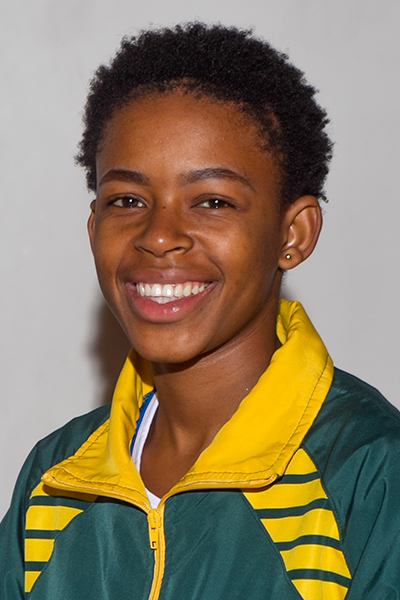Latest News Archive
Please select Category, Year, and then Month to display items
07 March 2018
Photo Supplied
 Ts’epang Sello, one of the Kovsie contenders for a medal at Friday’s Varsity athletics meeting.
Ts’epang Sello, one of the Kovsie contenders for a medal at Friday’s Varsity athletics meeting.
Ts’epang Sello, one of the Kovsie contenders
for a medal at Friday’s Varsity athletics meeting.
Photo: Supplied
The University of the Free State will hope to start developing their next Wayde van Niekerk when the first Varsity athletics meeting takes place on Friday at the Tuks Athletics Stadium in Pretoria.
The second meeting is on 23 March, also in Pretoria.
Thirteen members (five men and eight women) of the Kovsie team of 25 are still under the age of 21.
The hope for medals among the men would be on Sefako Mokhosoa (triple jump), Hendrik Maartens, and Tsebo Matsoso (both 200 m). Mokhosoa, who represented South Africa last year at the Southern Region Championships, is in red-hot form and achieved a personal best of 16.13 m at the Motheo/Xhariep meeting two weeks ago. This is currently the third best distance in the country for 2018.
Maartens would like to go one step further. In last year’s final Varsity meeting, he finished second in 20.62. Great things are expected of Matsoso, a first-year student who competed at the African Junior Championship in 2017. Last year, he was one of the top athletes at school level by winning the SA title in a time of 21.14.
Ts’epang Sello (800 m) and Elmé Smith (100 m and 200 m) will lead the charge for the women. Sello already came close to her personal best (2:09.8) this year, while Smith has also been running fast times. Her best this year was 11.88 (100 m) and 24.53 (200 m).
Tyler Beling (1 500 m) is another first-year student who is showing great potential. She obtained a fourth position at last weekend’s CAA Southern Region Cross-country Championships. Maryke Brits (100 m hurdles and long jump) is a possible medallist, despite running her first event for the year on Wednesday night.
The meeting starts at 17:15 and will be broadcast on SuperSport 5.
Prof Tredoux turns theories regarding the formation of metals on its head
2013-09-17
|
 |
|
Prof Marian Tredoux
17 September 2013 |
The latest research conducted by Prof Marian Tredoux of the Department of Geology, in collaboration with her research assistant Bianca Kennedy and their colleagues in Germany, placed established theories regarding how minerals of the platinum-group of elements are formed, under close scrutiny.
The article on this research of which Prof Tredoux is a co-author – ‘Noble metal nanoclusters and nanoparticles precede mineral formation in magmatic sulphide melts’ – was published in Nature Communications on 6 September 2013. It is an online journal for research of the highest quality in the fields of biological, physical and chemical sciences.
This study found that atoms of platinum and arsenic create nanoclusters, long before the mineral sperrylite can crystallise. Thus, the platinum does not occur as a primary sulphur compound. The research was conducted at the Steinmann Institute of the University of Bonn, Germany, as well as here in Bloemfontein.
Monetary support from Inkaba yeAfrica – a German-South African multidisciplinary and intercultural Earth Science collaborative of the National Research Foundation (NRF) – made this research possible. Studies are now also being conducted on other metals in the precious metal group, specifically palladium, rhodium and ruthenium.
The discovery of the nanoclusters and the combination with arsenic can have far-reaching consequences for the platinum mine industry, if it can be utilised to recover a greater amount of platinum ore and therefore less wastage ending up in mine dumps. This will signify optimal mining of a scarce and valuable metal, one of South Africa’s most important export products.
For Prof Tredoux, the research results also prove thoughts she already had some twenty years ago around the forming of platinum minerals. “Researchers laughed in my face, but the evidence had to wait for the development of technology to prove it.” Young researchers were very excited at recent congresses about the findings, since the new models can bring new insights.
“Chemistry researchers have been talking about platinum element clusters in watery environments for quite a while, but it was thought that these would not appear in magmas (molten rock) due to the high temperatures (>1 000 degrees celsius).”
Prof Tredoux has already delivered lectures at congresses in Scotland, Hungary, Sweden and Italy on this research.
Read the article at: http://www.nature.com/ncomms/2013/130906/ncomms3405/full/ncomms3405.html